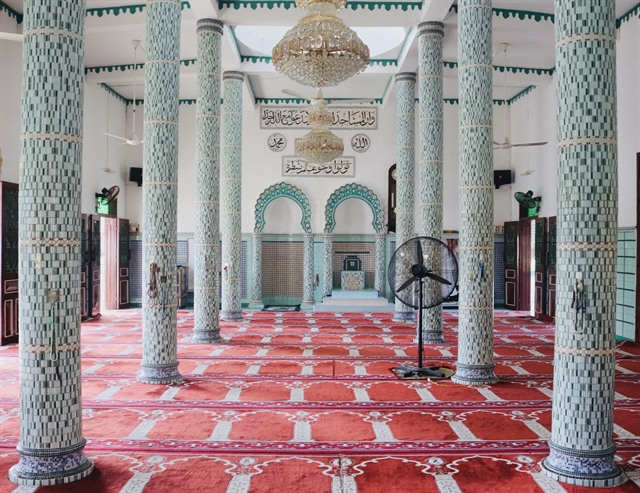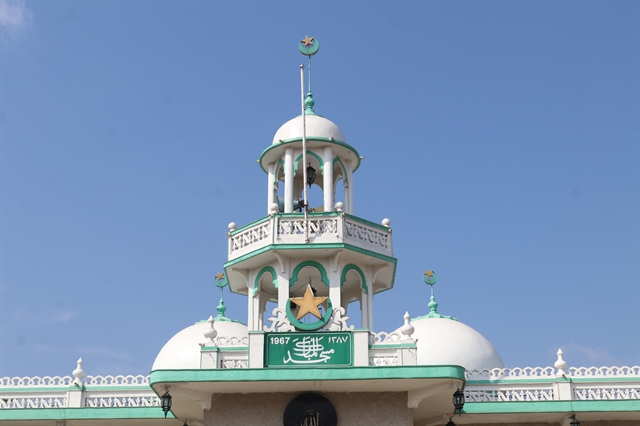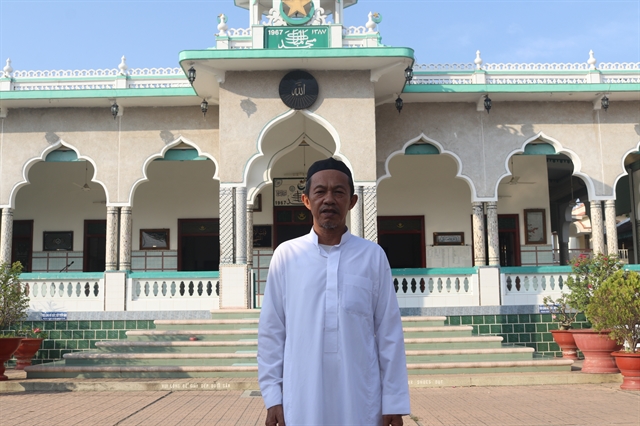The Masjid Mubarak Mosque is located in Châu Đốc City in the Mekong Delta province of An Giang. It is recognised as a national architectural and cultural heritage site, as well as one of the oldest mosques of the Chăm ethnic communities in the country.
Go Sa Ly, deputy imam of the Masjid Mubarak Mosque, spoke with Việt Nam News about the preservation of and the impact of tourism on the mosque.
Please share with us the history of the construction and development of the Masjid Mubarak Mosque.The Masjid Mubarak Mosque has a long and evolving history.
Its initial construction took place over a 23-year period, starting in 1750.
During that time, the mosque was rebuilt twice, using simple materials like bamboo and palm leaves.
From 1773 to 1808, the mosque was reconstructed, this time with more durable acacia wood pillars and a roof of leaves.
A more significant transformation occurred between 1808 and 1922, when the mosque was upgraded with a tile roof, round wooden pillars, brick walls, terracotta tile flooring, and a base of stone.
Finally, in 1965, the mosque was completely rebuilt using reinforced concrete, and is the structure that stands today.
 |
Over the years, various additions have been made to the mosque complex, including areas and facilities for water access (presumably for ablutions) and a school for children.
What value does the mosque hold for the local community?
This mosque is deeply significant to the Chăm community here. It’s recognised as a cultural and architectural landmark, a source of pride for the Chăm people who practise Islam here.
 |
More than that, it’s a vital centre for their religious life, a place where they gather for worship and community events.
It also holds a special place as the final resting place for ancestors and members of the community, connecting present generations to their history and heritage.
Does tourism impact the preservation of the mosque’s architecture?
The impact of tourism on the preservation of the mosque and its cultural values is minimal.
Visitors tend to be casual while exploring nearby Chăm villages or groups on pre-arranged tours.
The number of visitors usually increases during the summer months, and they include both domestic and international tourists.
 |
Visitors are welcome to tour and take photographs throughout the mosque premises. The local people are friendly and happy to share information about the mosque and their community, answering questions visitors might have.
However, it’s important for visitors to remember that this is a place of worship and to dress properly, especially when entering the main prayer hall.
How is the mosque preserved?
The mosque is preserved through the combined efforts of the local Chăm community and the local authorities.
When any repairs or restoration work are needed, the community members inform each other, come together, and contribute to the project, both with their labour and with donations.
In addition, people from the neighbourhood clean the mosque daily, ensuring it is kept in good condition.
The local government also provides financial support for some of the preservation work.
For example, some years ago, when the mosque’s roof developed leaks, the community raised funds, and they also received assistance from the local government.
The government provided additional funds, and the roof was replaced with a more substantial one.


